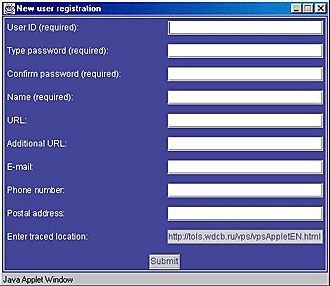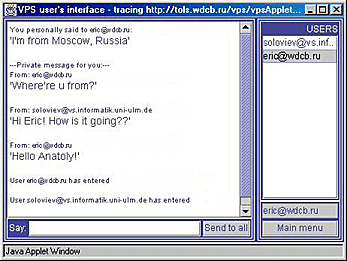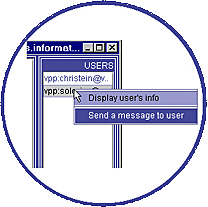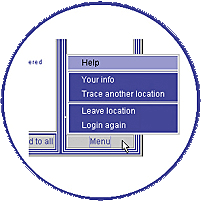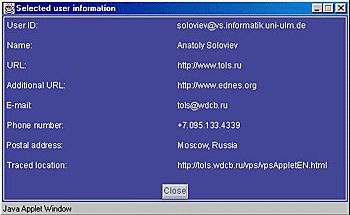
VPS goals
 let people meet on Virtual Locations like Web URL, a Web-page/Web-site, GPS coordinates, a chat room, etc. Otherwise people on such locations are unaware of each other. Virtual Presence enables people to communicate and allows to work together on such locations
let people meet on Virtual Locations like Web URL, a Web-page/Web-site, GPS coordinates, a chat room, etc. Otherwise people on such locations are unaware of each other. Virtual Presence enables people to communicate and allows to work together on such locations
 bring together neighborhood information delivered by the VPS (which user has opened which shared document, or which user reside at which location) with static user information or user properties like a user name, postal address or phone number, or as well an URL of a user video conferencing system endpoint
bring together neighborhood information delivered by the VPS (which user has opened which shared document, or which user reside at which location) with static user information or user properties like a user name, postal address or phone number, or as well an URL of a user video conferencing system endpoint
Virtual Presence types
 Location based Presence
Location based Presence
 Presentity based Presence
Presentity based Presence
Examples of using VPS
 Collaborative browsing
Collaborative browsing
 Collaborative working
Collaborative working
 Conference enabler
Conference enabler
 e-Commerce
e-Commerce
 Tele-teaching
Tele-teaching
 Mobile context
Mobile context
Current characteristics of VPS
- General purpose Virtual Presence Service for all kind of applications that need Presence related Information
- Implements Location based Presence
- Implements Presentity based Presence
- Pure Java implementation
- Deals with various database systems like SQL databases, LDAP or proprietary solutions
- An arbitrary database scheme can be published to VPS (via a .xml file that describes the scheme)
- Implements a client/server architecture with a lean client side API
- Event controlled: events are generated if Presence or Property Information changes
- Watcher can filter Presentities (e.g., one only likes to see his own or his colleagues buddies)
Intended characteristics of VPS
- Will support a distributed architecture, where each VPS server will be responsible for a particular domain within a space of Locations
- Will implement a kind of Roll Based Access Control (RBAC), so that a user (or Presentity) can decide, which other users (or Watchers) will be able to see him, and which other users will be able to see which of his attributes
- Will support additional kinds of Locations like GPS coordinates
- Will support different kinds of Location definitions like cells, radius, all Web-pages that contain certain keywords, etc.
- The server side will speak the SIP protocol (with some extensions required by VPS)
User interface functionality
- Logging on to the system as an existing user
- Creating a new user and logging on to the system
- Tracing Virtual Location
- Chat and private messaging
- Displaying selected user properties
- Changing own user properties
- Leaving traced Virtual Location
User interface features
- Specifying and changing Virtual Location to be traced or following the browsed location
- Displaying an alphabetically sorted list of users located at Virtual Location
- Chat
- Instant private messaging
- Leaving traced Virtual Location
- Logging on to the system repeatedly
- Cyrillic letters support while using chat
- Multilingual interface support
Program description
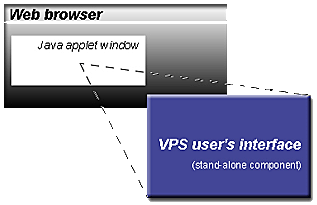
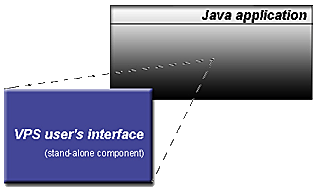
System architecture
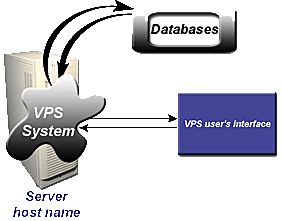
Multilingual interface support
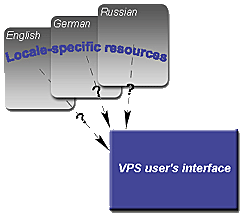
Screen-shots of developed user interface
